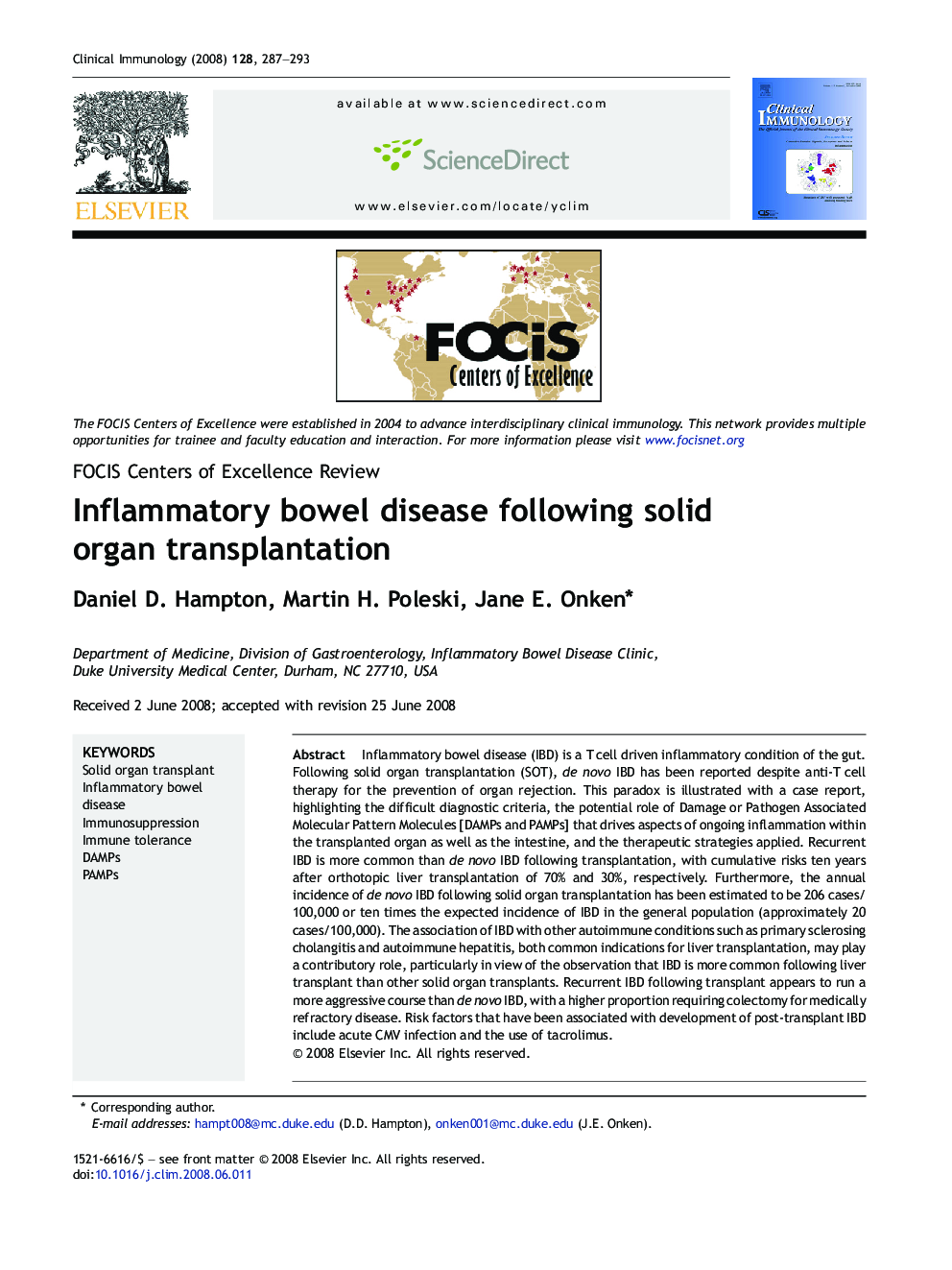| کد مقاله | کد نشریه | سال انتشار | مقاله انگلیسی | نسخه تمام متن |
|---|---|---|---|---|
| 3258265 | 1207446 | 2008 | 7 صفحه PDF | دانلود رایگان |

Inflammatory bowel disease (IBD) is a T cell driven inflammatory condition of the gut. Following solid organ transplantation (SOT), de novo IBD has been reported despite anti-T cell therapy for the prevention of organ rejection. This paradox is illustrated with a case report, highlighting the difficult diagnostic criteria, the potential role of Damage or Pathogen Associated Molecular Pattern Molecules [DAMPs and PAMPs] that drives aspects of ongoing inflammation within the transplanted organ as well as the intestine, and the therapeutic strategies applied. Recurrent IBD is more common than de novo IBD following transplantation, with cumulative risks ten years after orthotopic liver transplantation of 70% and 30%, respectively. Furthermore, the annual incidence of de novo IBD following solid organ transplantation has been estimated to be 206 cases/100,000 or ten times the expected incidence of IBD in the general population (approximately 20 cases/100,000). The association of IBD with other autoimmune conditions such as primary sclerosing cholangitis and autoimmune hepatitis, both common indications for liver transplantation, may play a contributory role, particularly in view of the observation that IBD is more common following liver transplant than other solid organ transplants. Recurrent IBD following transplant appears to run a more aggressive course than de novo IBD, with a higher proportion requiring colectomy for medically refractory disease. Risk factors that have been associated with development of post-transplant IBD include acute CMV infection and the use of tacrolimus.
Journal: Clinical Immunology - Volume 128, Issue 3, September 2008, Pages 287–293